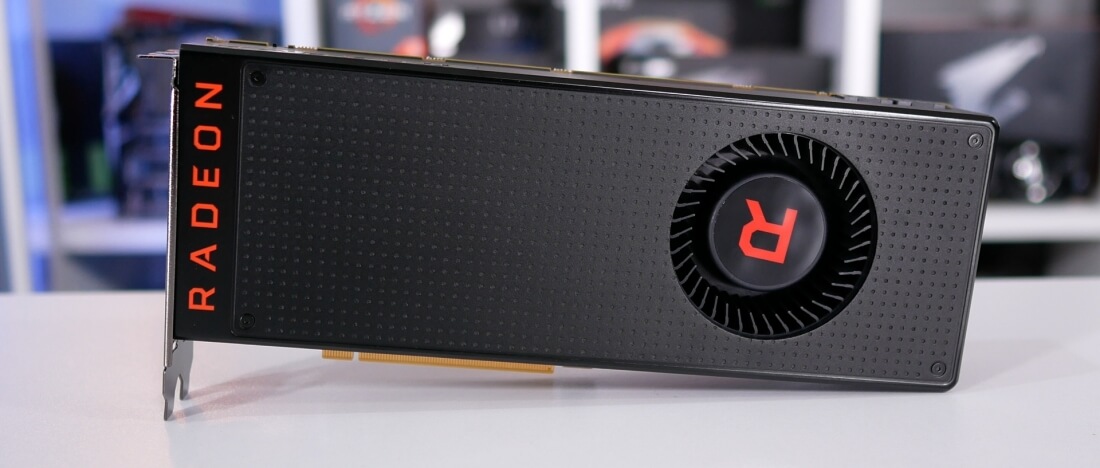Welcome to the start of our Radeon RX Vega coverage. Now we'd like to point out that we only received a Vega sample yesterday, on a Sunday. AMD ended up playing the role of the courier and hand delivered the sample to us because the initial Vega 64 shipment got lost along the way. Those samples should be arriving later this week though, so expect follow up coverage soon.
Due to the limited time we've had with Vega 56 we have put all our focus and energy on gaming benchmarks, with over 20 games lined up. Later this week, when we receive our delayed Vega 64 sample, we'll provide a more thorough review where we check for other GPU aspects such as overclocking, operating temperatures and power consumption.
On the upside, we were well aware Vega was on its way and set for release on August 14, so the second we wrapped up Threadripper testing, we changed gears and began GPU testing. All the data in this review is 100% fresh, we've recorded it over the last few days using the latest available drivers. As usual, the GPU testing was conducted on our Core i7-7700K test machine clocked at 4.9 GHz.
For now we have scores for the GeForce GTX 1080 Ti, 1080, 1070, and 1060, as well as the Radeon RX 580, and Fury X, covering performance at 1080p, 1440p and 4K resolutions.
At the head of AMD's new Radeon RX Vega family we have the liquid cooled edition of the RX Vega 64. This model features 64 compute units for a grand total of 4096 stream processors, or cores. It operates at a base frequency of 1406 MHz with a boost frequency of 1677 MHz. That's a far cry from the 1.9 - 2.0 GHz Nvidia's GPUs boost up to, but we knew the green team would still come away with a clock speed advantage.
Even at this frequency the RX Vega 64 LC Edition boasts a peak single precision throughput of 13.7 teraflops, that's more than the 11.3 teraflops the GTX 1080 Ti spits out and roughly 60% more than the Fury X.

The air-cooled model known simply as RX Vega 64 has the same number of cores, they're just clocked 11% lower for the base at 1247 MHz and 8% lower for the boost at 1546 MHz. As you might have guessed this has reduced the peak single precision throughput by 8%.
Then we have the cut down RX Vega 56 which we're testing today. It features 56 compute units for 3584 stream processors and that's a 13% reduction in core count when compared to the 64 version.
All three models come fitted with 8GB's of second-generation high bandwidth memory (HBM 2) which provides 484 GB/s of bandwidth for the Vega 64 cards and 410 GB/s for Vega 56. The only concerning specification here is the board power rating which sees the liquid cooled model slapped with a 345 watt rating, 295 watts for the air-cooled model, and 210 watts for Vega 56.
The base Radeon RX Vega 64 "black" is coming in at $500, set to match the current MSRP of the GeForce GTX 1080, and here AMD says it will become "the new GPU king." The limited edition air cooled version will come at a $50 premium, so $550 all up. Meanwhile, the faster liquid cooled Vega 64 model will come in at $600, undercutting the GTX 1080 Ti by $100.
The Radeon RX Vega 56 will come in at $400, priced alongside the GTX 1070. In my opinion the RX Vega 56 looks to be the best value proposition of the lot and as the most affordable model we're kind of glad this is where we're starting.
It's time we start looking at those blue bar graphs. Do note because we have tested with 25 games at 3 resolutions there are 75 (!) graphs in this review. We'll just focus on 1440p results for commentary due to time constraints, but the 1080p and 4K results will be shown alongside while discussing the 1440p numbers.
One last and very important note. Please be aware we no longer test with AMD or Nvidia reference graphics cards as we strongly recommend buyers avoid these models (due to the premium involved) and thankfully most consumers do anyway. So rather than testing with the GTX 1070 Founders Edition, we're using the MSI Gaming X model which is a little bit faster thanks to a better cooler and factory overclocking. You have the full list of graphics cards used in the table below as usual.
GPU Test System Specs
|
Benchmarks
Far Cry Primal

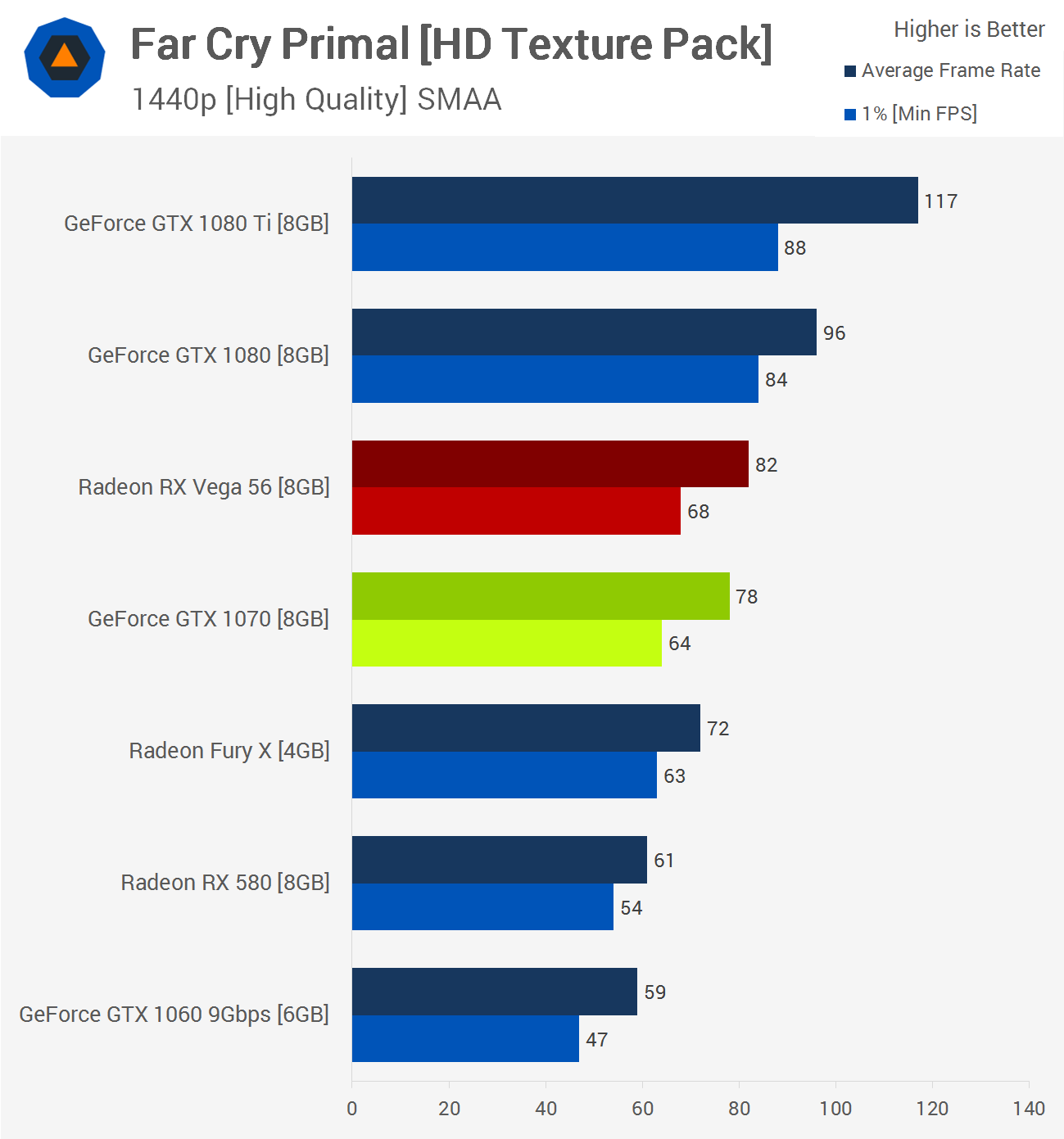
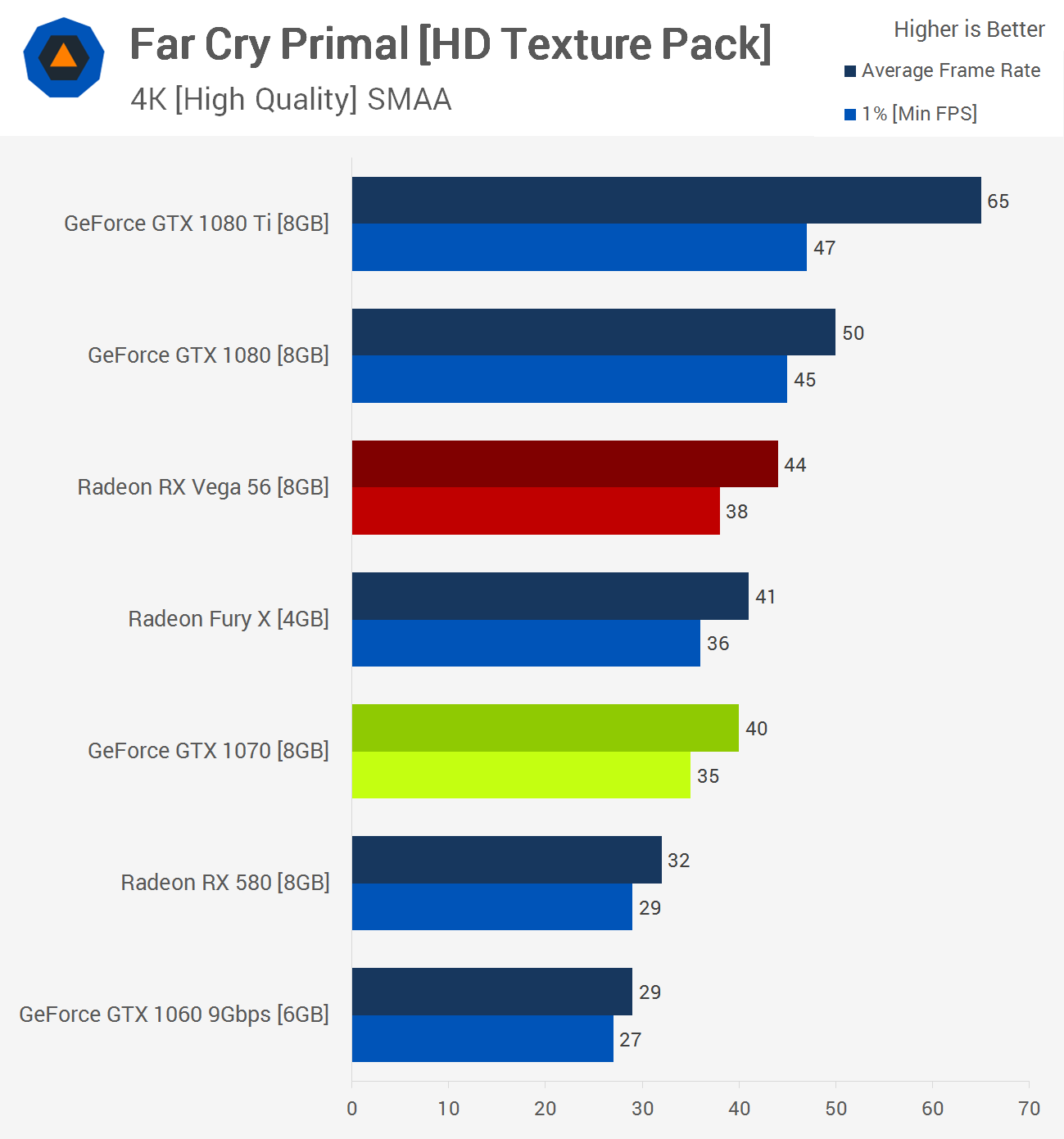
First up we have Far Cry Primal and here is a quick look at the 1080p and 4K results. Vega 56 trails the GTX 1070 at 1080p and 4K which is odd given it pulled ahead at 1440p. The margins were slim either way but even so we was surprised to find the Radeon graphics card hitting the lead by a 5% margin at 1440p.
Tom Clancy's Ghost Recon Wildlands
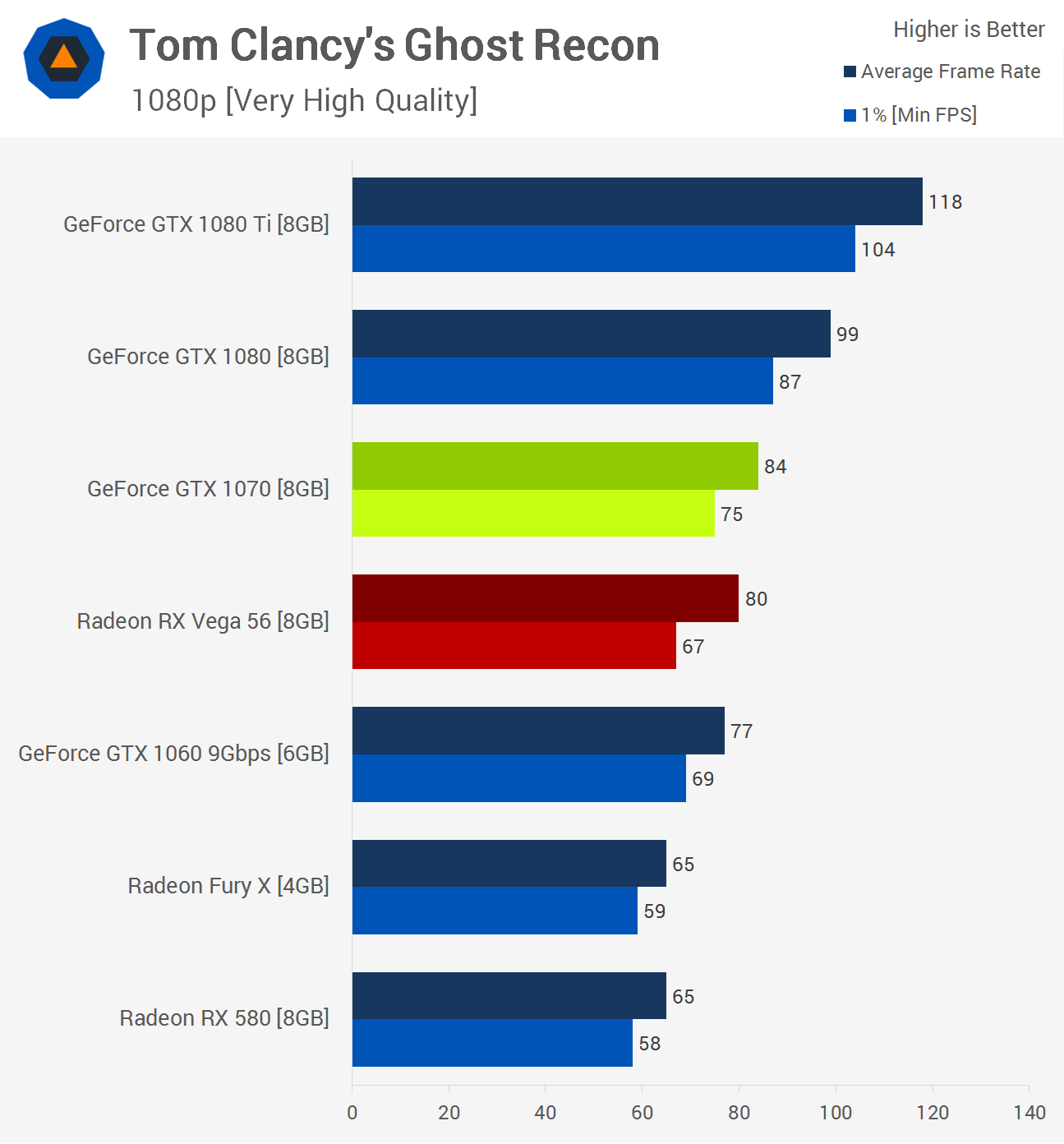
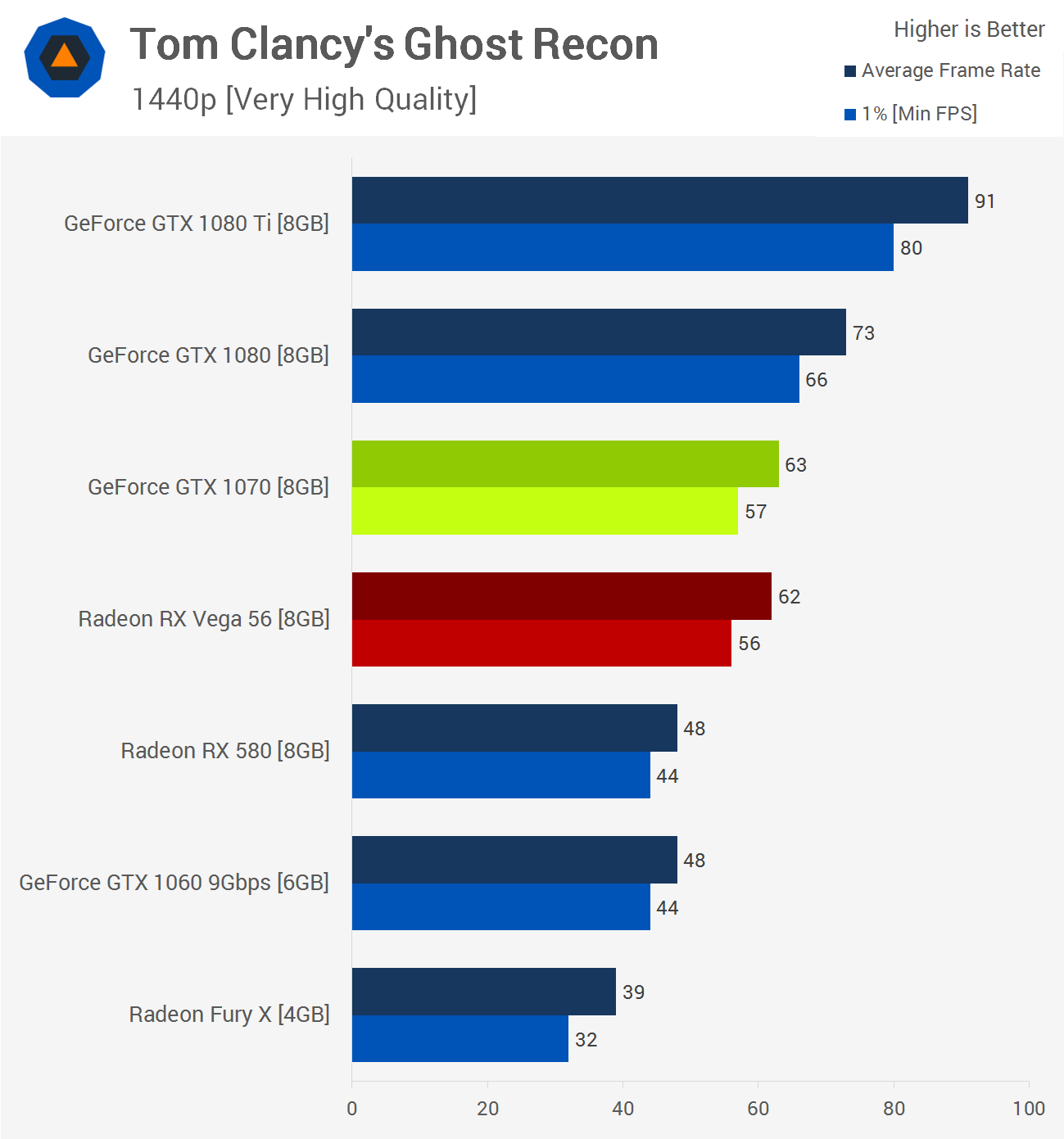

Moving to to Tom Clancy's Ghost Recon Wildlands we see that AMD's new mid-range to high-end contender trails the GTX 1070 though this time matches it at the 4K resolution. Switching back to 1440p we see that performance is much the same, technically Vega 56 was a frame slower but you know, margin of error and all, so yeah pretty much the same performance in Wildlands.
Overwatch



Next up we have the hugely Overwatch and this is a title that was historically favored the green team and we find that yet again that is the case here with the GTX 1070 comfortably beating the new Vega 56 GPU at 1080p and 4K. Looking at the 1440p numbers we see that the 1070 is 9% faster on average which is a decent win for Nvidia.


